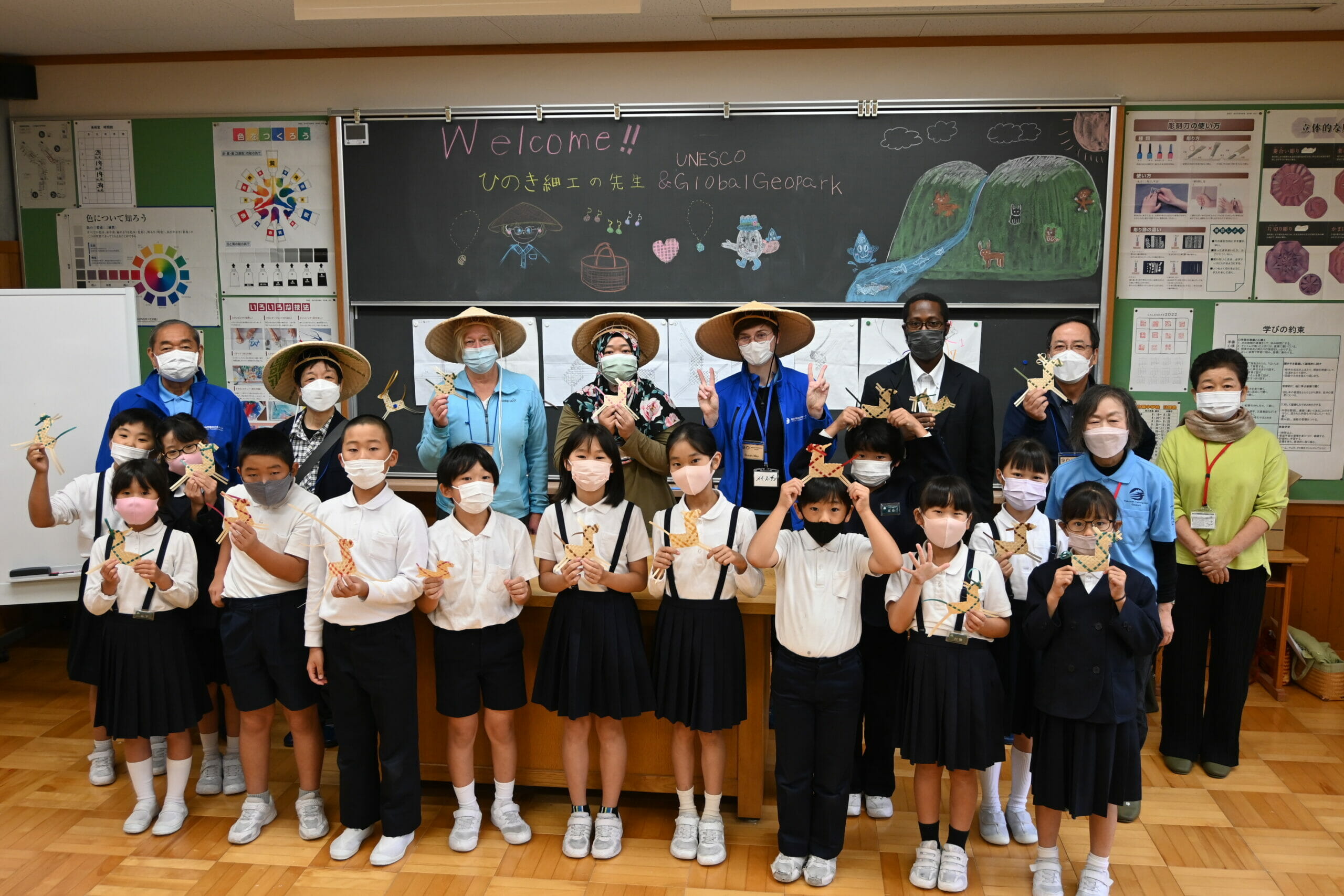BLOG
UNESCO Global Geopark Evaluation Mission
From October 6 to 9 we had our very first UNESCO Global Geopark Evaluation Mission!
The Hakusan Tedorigawa Geopark was first registered as a Japanese Geopark in 2011, and for more than ten years we have been working on building a geopark worthy of being designated as a UNESCO Global Geopark.
In Japan, in order to apply to UNESCO to become a UNESCO Global Geopark, you must first apply to the Japan Geopark Committee for a national endorsement. After receiving a national endorsement, an aspiring geopark can apply to UNESCO, and following an on-site evaluation mission by two evaluators, the final decision is made by the UNESCO Executive Committee. In 2013 we thought we were ready, and applied to the Japan Geopark Committee, but after a thorough examination we were deemed un-prepared, and our application was deferred. We didn’t give up though, and after some improvements we tried again in 2015 with unfortunately the same result…
Then, in 2020, with almost ten years of experience under our belts, we were finally deemed worthy of a national endorsement, and applied to UNESCO in the same year, as an aspiring UNESCO Global Geopark!
However, due to the COVID19 pandemic, foreign visitors – including our potential evaluators – were unable to enter Japan, and UNESCO Global Geopark evaluation and re-evaluation missions to Japan were delayed for almost 2 years. In October, after loosening of border controls, visitors were able to enter Japan and we could finally hold our evaluation mission.
From October 6 to 9 we welcomed senior evaluator Kristin Rangnes from Gea Norvegica UNESCO Global Geopark in Norway, and junior evaluator Rasanubari Abd Hamid, from Langkawi UNESCO Global Geopark in Malaysia.
Day One
The two evaluators arrived late in the evening on October 5th, and day one began the following day. The day began with an introductory meeting, held at the Kanazawa Institute of Technology (KIT), Hakusanroku Campus. Here we introduced an overview of the geopark, and also saw some of the great initiatives incorporating the Hakusan Tedorigawa Geopark and the SDGs, being carried out by students and alumni of KIT. Following this we headed to Hakurei Elementary School, where we joined grades 3 and 4, who were learning about the traditional craft of Cypress Weaving. In the afternoon we showed the evaluators our most internationally significant site: the Kuwajima Fossil Bluff, followed by a visit to the Hakusan Dinosaur Park Shiramine which hosts many of the fossils unearthed from the bluff. With backgrounds in paleontology, both evaluators were thrilled to see the site, as well as the fossils excavated from within.


Top/Left: Trying cypress weaving with students from Hakurei Elementary School
Bottom/Right: Viewing the Kuwajima Fossil Bluff
Day Two
The following day started early, and with the theme of disaster prevention in mind, we visited the Hyakumangan-no-Iwa Rock and the Ichinose Visitor Centre before heading to the base of Mt. Hakusan to see Sabo Erosion-Prevention work being carried out high on the mountainside. Despite the freezing wet weather, our evaluators diligently listened to the explanations. In the afternoon we visited the Hakusan Folk Museum and learned about the local traditional culture, before heading into Shiramine to hear a presentation about our collaboration with universities and the Mount Hakusan Biosphere Reserve. The evening finished with a very welcome dip in the Hime no Yu Hot Spring.
Day Three
On the 8th we began following the Tedori River downstream, visiting the Tedori Gorge and Watagataki Waterfall along the way. We then rode the gondola to the top of the Shishiku Highlands to see the expanse of the Tedori River Alluvial Fan, and heard a wonderful presentation from our Geopark Learning Supporters. In the afternoon we visited the Yokomachi Urarakan to hear a presentation from Tsurugi Highschool students, and even had a chance to see the Hourai Festival up close! We then visited the Hakusan City Tourism League to learn about our partnership, before heading to the Yoshida Brewery to learn about their SDGs-focused approach to brewing, as well as some of our collaboration activities.
Day Four
On the final day we visited the Arayo Factory to see the traditional production of pickled blowfish ovaries. Although initially skeptic about the taste, the evaluators eventually decided to try some. After a quick tour of Mikawa, we visited the Roots of Ishikawa Museum before making our way to City Hall for the final meeting.


Top/Left: Learning about sake brewing at the Yoshida Brewery
Bottom/Right: A photo following the final meeting
Overall it was a busy and exhausting few days, made possible thanks to all the support of our guides, learning supporters, constituent groups, partner groups, scientific council, and local supporters. While a tough experience, the evaluation mission was a great opportunity to learn from two highly knowledgeable evaluators, and they both gave us great insight into better managing the geopark going forward.
Regardless of the result, we regard the evaluation as a huge success. Not only was it a learning opportunity for both us and the evaluators, it was also a great practice in reviewing the unique features of our geopark. We look forward to learning the final results in Spring 2023.

